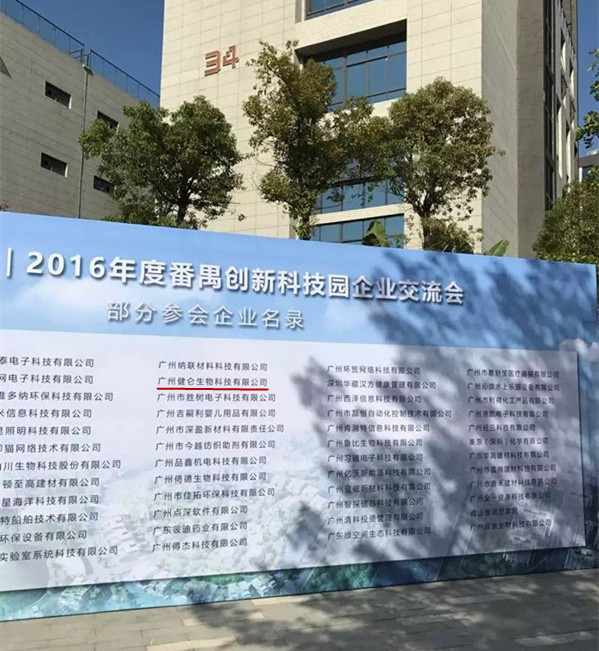- 产品描述
钩端螺旋体IgM免疫荧光试剂盒
Leptospira IgM IFA Kit
广州健仑生物科技有限公司
主要用途:用于检测人血清中的钩端螺旋体IgM抗体
产品规格:12 孔/张,10 张/盒
主要产品包括:包柔氏螺旋体菌、布鲁氏菌、贝纳特氏立克次体、土伦杆菌、钩端螺旋体、新型立克次体、恙虫病、立克次体、果氏巴贝西虫、马焦虫、牛焦虫、利什曼虫、新包虫、弓形虫、猫流感病毒、猫冠状病毒、猫疱疹病毒、犬瘟病毒、犬细小病毒等病原微生物的 IFA、MIF、ELISA试剂。
钩端螺旋体IgM免疫荧光试剂盒
我司还提供其它进口或国产试剂盒:登革热、疟疾、西尼罗河、立克次体、无形体、蜱虫、恙虫、利什曼原虫、RK39、汉坦病毒、深林脑炎、流感、A链球菌、合胞病毒、腮病毒、乙脑、寨卡、黄热病、基孔肯雅热、克锥虫病、违禁品滥用、肺炎球菌、军团菌、化妆品检测、食品安全检测等试剂盒以及日本生研细菌分型诊断血清、德国SiFin诊断血清、丹麦SSI诊断血清等产品。
欢迎咨询
欢迎咨询2042552662

| JL-FL38 | parkeri立克次体IgG ELISA | R. parkeri IgG ELISA Kit |
| JL-FL39 | montanensis立克次体IgG ELISA | R. montanensis IgG ELISA Kit |
| JL-FL40 | EB病毒衣壳IgG免疫荧光玻片试剂盒 | EBV Viral Capsid IgG IFA Kit |
| JL-FL41 | EB病毒衣壳IgM免疫荧光玻片试剂盒 | EBV Viral Capsid IgM IFA Kit |
| JL-FL42 | EB病毒早期抗原IgG免疫荧光玻片试剂盒 | EBV Early Antigens IgG IFA Kit |
| JL-FL43 | 钩端螺旋体IgG免疫荧光试剂盒 | Leptospira IgG IFA Kit |
| JL-FL44 | Leptospira IgM IFA Kit | |
| JL-FL45 | 果氏巴贝西虫免疫荧光玻片 | Babesia microti IFA Substrate slide |
| JL-FL46 | 果氏巴贝西虫IgG免疫荧光试剂盒 | Babesia microti IgG IFA Kit |
| JL-FL47 | 果氏巴贝西虫IgM免疫荧光试剂盒 | Babesia microti IgM IFA Kit |
| JL-FL48 | 埃立克体IgG微量免疫荧光试剂盒 | Ehrlichia canis Canine IFA IgG Kit |
| JL-FL49 | 包柔氏螺旋体菌IgG免疫荧光试剂盒 | Borrelia IgG IFA Kit |
| JL-FL50 | 布鲁氏菌IgG免疫荧光试剂盒 | Brucella IgG IFA Kit |
| JL-FL51 | 里氏新立克次体IgG免疫荧光试剂盒 | Neorickettsia risticii IgG IFA Kit |
| JL-FL52 | 弓形虫IgG免疫荧光试剂盒(检测猫) | Toxoplasma IFA Feline IgG Kit |
| JL-FL53 | 弓形虫IgG免疫荧光试剂盒(检测狗) | Toxoplasma IFA Canine IgG Kit |
二维码扫一扫
【公司名称】 广州健仑生物科技有限公司
【】 杨永汉
【】
【腾讯 】 2042552662
【公司地址】 广州清华科技园创新基地番禺石楼镇创启路63号二期2幢101-3室
【企业文化】


另一个还不清楚的问题是,单层的视网膜上皮到底是怎么演变成视杯形状的。总的来说,机械力和组织的刚性控制着上皮组织的形变。通过在体外测定视杯形成过程中上皮不同部分的受力方向和组织刚性,我们发现,形成这一结构需要三个步骤。在这一过程中,视网膜的刚性减弱,柔韧性增加;同时,视网膜与上皮交界处的细胞变成楔形;zui后,视网膜因快速扩展而内陷。这三个步骤对视杯的形成至关重要。实际上,当我们把这些与组织的机械性质有关的条件输入计算机模拟程序后,的确出现了我们熟悉的酒杯形状。
在培养皿中,诱导胚胎干细胞形成视网膜的过程,扼要地再现了胚胎中眼睛发育的主要步骤。这项技术对基础研究的价值不可估量,同时有助于开发一些疗法,帮助视力减退的患者恢复视力。如下图所示,在加入名为生长因子的分子之后,胚胎干细胞开始聚集;大约5天后,开始形成zui原始的视泡。及至第7天,视泡向外凸出;几天后,该结构内陷,形成视杯;到第24天,视网膜的所有层次初具雏形。
应用前景
听说我们的研究后,人们自然想知道,用小鼠胚胎干细胞所做的工作究竟能否给眼疾患者带来好处。在这个方向上,我们已取得了一些进展。值得一提的是,我的实验室zui近刚刚在一篇文章中报道过,我们成功地使人类胚胎干细胞分化成视杯和多层神经组织。我们预计,同样的培养方法也可应用于人类的诱导多能干细胞(induced pluripotent stem cells,iPS)——成熟细胞受到特定刺激后,经过逆转的发育过程,可成为诱导多能干细胞,其行为与胚胎干细胞相似。我们还发明了更好的低温贮存方法,能在液氮中储存由人类胚胎细胞分化成的视网膜组织。
这些工作都将推动体外培养的视网膜组织应用于医学。例如,我们可以制造人工视网膜,帮助人们研究常见眼部疾病的病理机制,推动新药和基因疗法的研究,逆转视网膜病变。
*有数百万人患有黄斑变性、视网膜色素变性(retinitis pigmentosa)和青光眼(glaucoma),这三种视网膜退行性疾病的患者也许都可以从我们的研究中获益。三种疾病中,发生病变的视网膜细胞层各不相同。在黄斑变性中,由于支撑组织“崩溃”,视网膜上皮的完整性受到影响,光感受器细胞也发生退化,尤其是视网膜中心区域。在视网膜色素变性中,视杆细胞(rod,光感受器细胞的一种)数量一年年逐渐减少,zui初也是zui常见的症状是“夜盲”,而后来,患者会丧失大部分视野,只剩下一小块中心视野。在青光眼病例中,受损的则是神经节细胞,这类细胞会伸出视神经,把视网膜与大脑后部皮层上的视觉处理中心连接起来。
Another issue that remains unclear is how the monolayer of the retinal epithelium evolves into a cup-like shape. In general, mechanical and tissue rigidity control epithelial tissue deformation. By measuring the direction of stress and the stiffness of the tissue in different parts of the epithelium in vitro during the formation of the optic cup, we found that three steps are required to form this structure. During this process, the rigidities of the retina weaken and the flexibility increases. At the same time, the cells at the junction of the retina and the epithelium become wedges. Finally, the retina is invaded by rapid expansion. These three steps on the formation of the cup is crucial. In fact, when we put these conditions related to the mechanical properties of the organization into our computer simulation program, we were indeed familiar with the shape of the glass.
The process of inducing embryonic stem cells to form the retina in petri dishes briefly reproduces the major steps in eye development in the embryo. The technology is invaluable to basic research and helps to develop therapies that help patients with vision loss regain their eyesight. As shown in the figure below, embryonic stem cells began to aggregate after the addition of a molecule called growth factor; about five days later, the most primitive vesicles began to form. By day 7, the vesicles bulged outward; a few days later, the structure retracted to form an optic cup; by day 24, all layers of the retina were initially rudimentary.
Application prospects
After hearing about our research, it is natural to wonder whether the work done with mouse embryonic stem cells can benefit patients with eye diseases. In this direction, we have made some progress. It is worth mentioning that my laboratory recently reported in an article that we successfully differentiated human embryonic stem cells into optic cups and multiple layers of neural tissue. We expect that the same culture can also be applied to human induced pluripotent stem cells (iPS), which are induced pluripotent stem cells after their specific stimuli have undergone a specific process of development Embryonic stem cells are similar. We have also invented better cryogenic storage methods that store retinal tissue differentiated from human embryonic cells in liquid nitrogen.
These efforts will promote the use of cultured retinal tissue in medicine. For example, we can make artificial retina to help people study the pathological mechanism of common eye diseases, promote the research of new drugs and gene therapy, and reverse the retinopathy.
Millions of people worldwide have macular degeneration, retinitis pigmentosa and glaucoma, and all three patients with retinal degenerative diseases may benefit from our study. Of the three diseases, retinal layers of the lesion vary. In macular degeneration, the integrity of the retinal epithelium is affected by the collapsing of the supporting tissue, and the photoreceptor cells also degenerate, especially in the central retinal region. In retinitis pigmentosa, the number of rods (a type of photoreceptor cells) gradually decreases year by year, the first and most common symptom is "night blindness", and later, the patient will lose most of the field of vision, leaving only A small central field of vision. In glaucoma cases, ganglion cells are damaged, and these cells extend the optic nerve, connecting the retina to the visual processing center on the posterior cortex of the brain.



